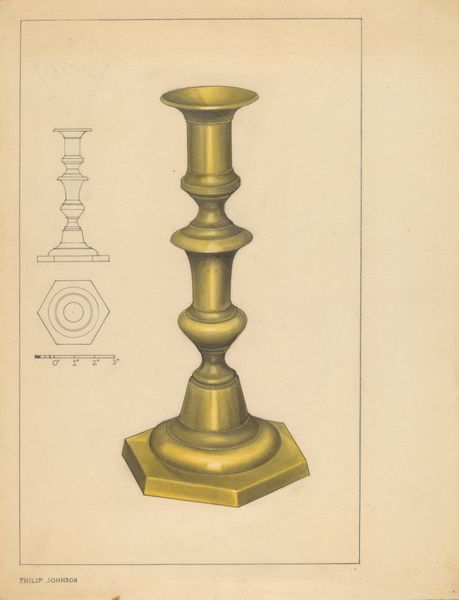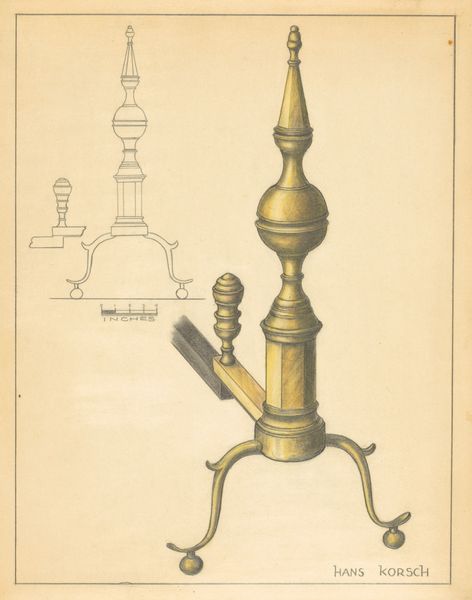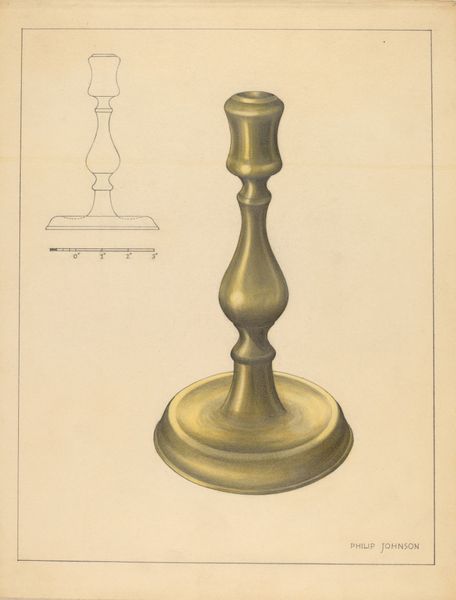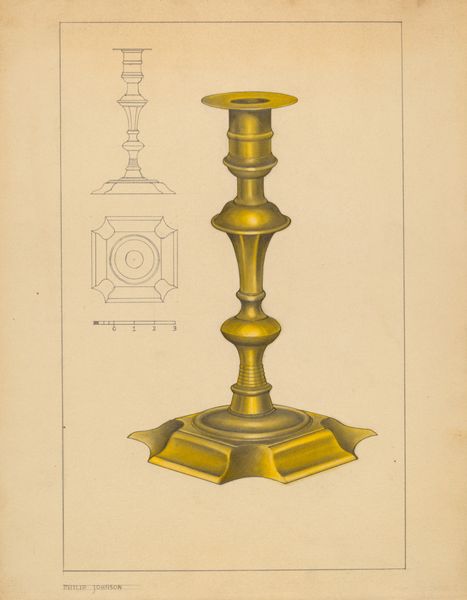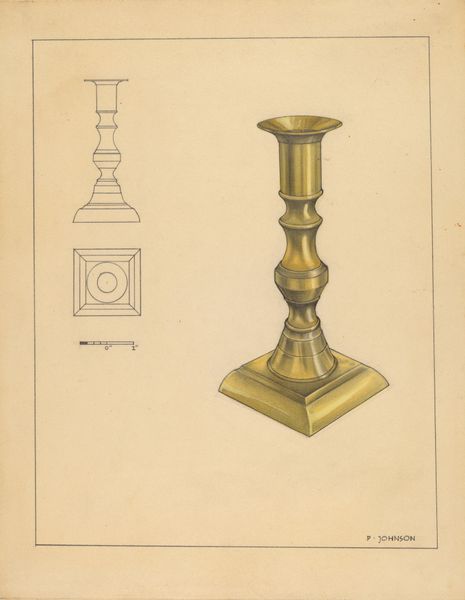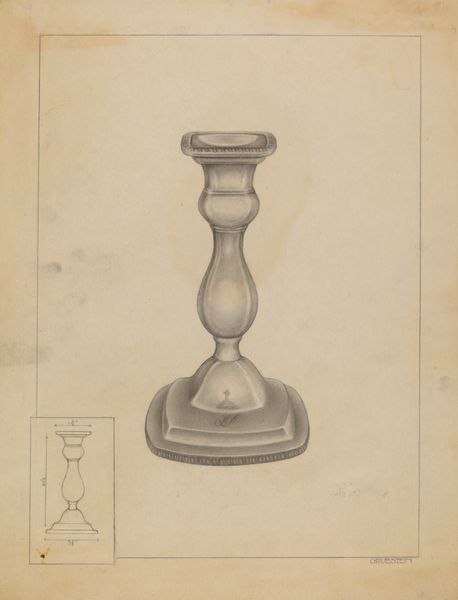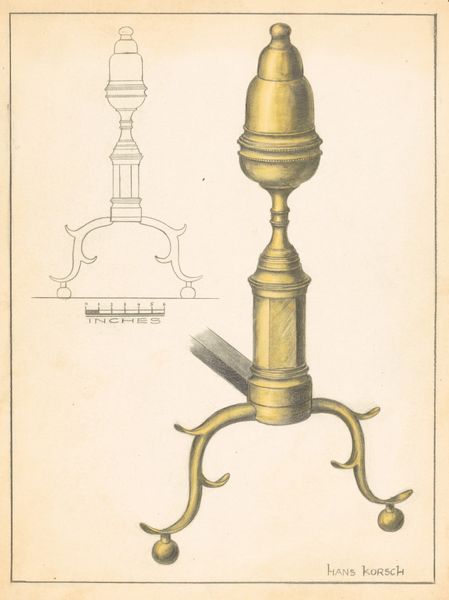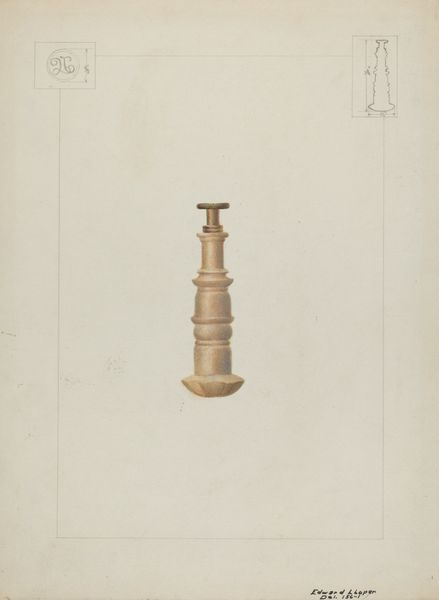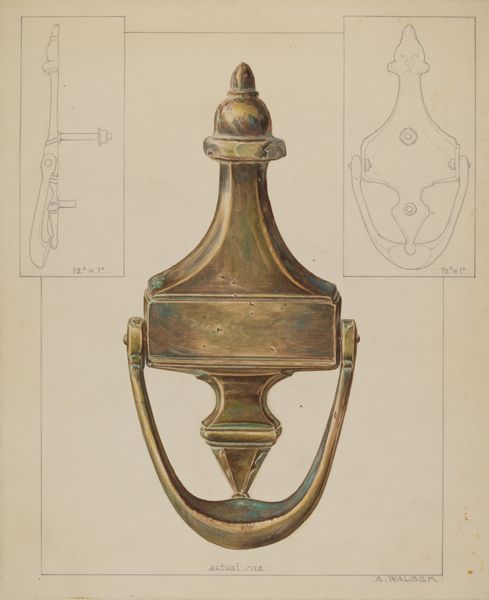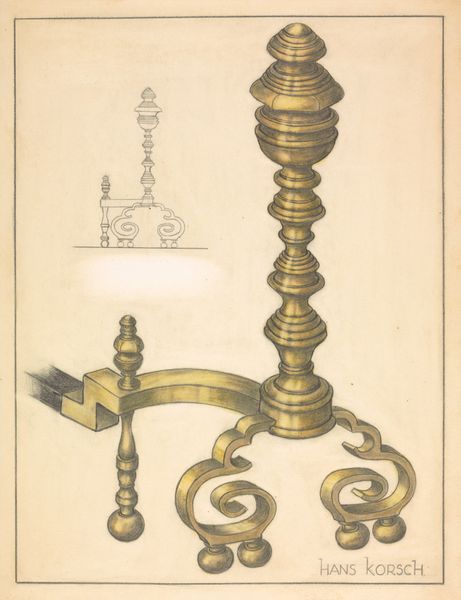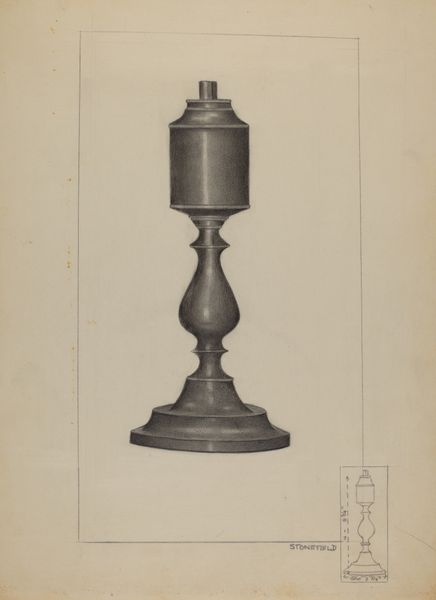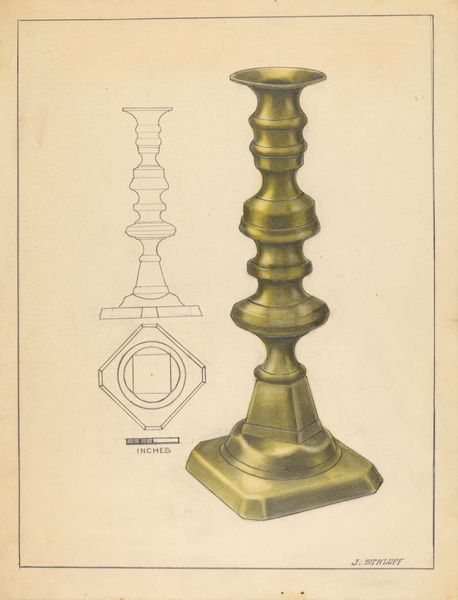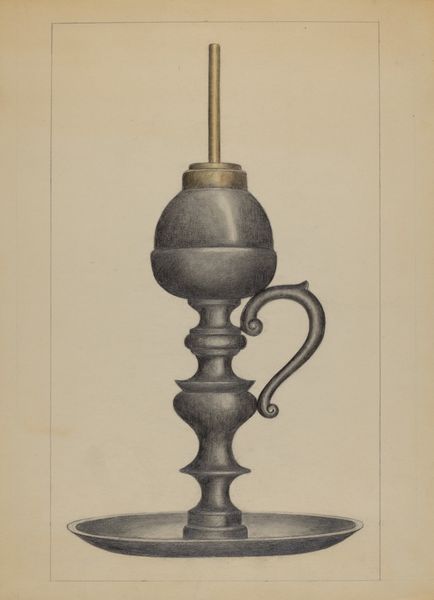
drawing, paper, pencil
#
drawing
#
paper
#
pencil
#
academic-art
Dimensions: overall: 30.3 x 22.5 cm (11 15/16 x 8 7/8 in.)
Copyright: National Gallery of Art: CC0 1.0
Curator: Here we have Jack Staloff's "Door Knocker," a pencil and paper drawing from around 1936. Editor: Well, hello there, ornate detail! It reminds me of visiting my grandmother—there's something about the drawing that whispers of formal parlors and the weight of tradition. Curator: It's a fascinating piece when you consider it as a product of the WPA Federal Art Project. Here you have fine art talent applied to… architectural hardware. The means of production are traditional—pencil on paper—but the intended end use is far removed from gallery walls. Editor: I immediately notice the classical elements: the shell motif at the top, and then those gracefully curving arms flanking what seems to be a stylized lyre. It's more than just functional; it's a symbolic gatekeeper, suggesting security, welcome, even status. Curator: Absolutely. There's an inherent class dynamic at play. These knocker designs aren't about mass production for ordinary dwellings. The level of artistic detailing signifies wealth and status. The pencil work itself mimics light reflecting off a gilded object. The texture here almost seems tangible. Editor: The whole image vibrates with anticipation, doesn’t it? Waiting for a knock, a visitor, a message… doorways are always liminal spaces and this knocker embodies the act of entering. Consider also the auditory symbol of a knocker, which announces someone’s presence—communicating both purpose and request. Curator: Which then raises the question, was this meant to be just a technical rendering or something more artistic? Its existence, isolated from its utilitarian context, transforms it into an artwork in itself. Is this art celebrating design, or a design elevated by artistic treatment? Editor: Exactly! Its original use now abstracted, it seems to function more as an icon, a marker of both entry and exclusion. Even that scale diagram points to something bigger: social rituals. Curator: I agree, it forces us to question our definitions, placing an object associated with craft firmly within the domain of "high art," complicating notions of value and labor. Editor: I’m walking away considering the image not only as representation but also as invitation into history’s symbolism and material conditions. Curator: And I see how art mediates social strata and forces reconsideration about the artistic process, the intended consumption, and historical context.
Comments
No comments
Be the first to comment and join the conversation on the ultimate creative platform.
